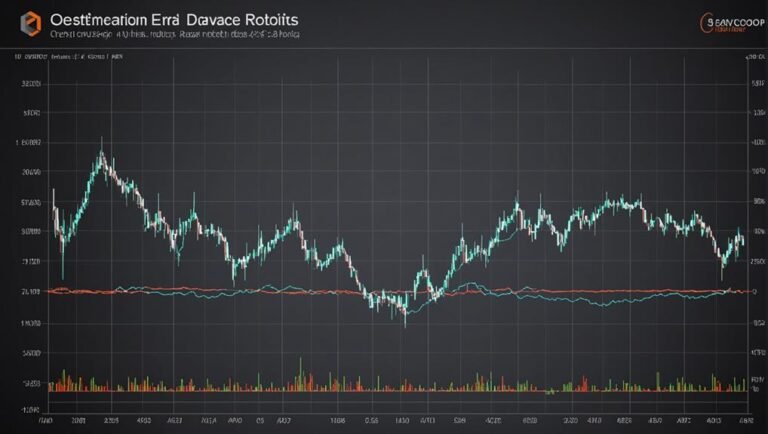What Is the Automated Clearing House (ACH), and How Does It Work?
The Automated Clearing House (ACH) is a pivotal component of the U.S. financial system, streamlining electronic fund transfers between banks. Understanding the intricacies of how ACH operates sheds light on the backbone of modern financial transactions. From batch processing to secure encryption, ACH plays an essential role in facilitating efficient money movement. Let's explore the inner workings of ACH and how it impacts our daily financial interactions, offering a glimpse into the world of digital finance and its underlying infrastructure.
Key Takeaways
- ACH is an electronic payment system facilitating swift fund transfers between banks.
- ACH operates by batch processing transactions for efficiency and speed.
- Transactions are processed with encryption and multiple security layers for protection.
- ACH reduces reliance on paper checks, enhancing payment accuracy and reliability.
- Understanding ACH transaction limits and fees is crucial for informed electronic transfers.
ACH Fundamentals
Understanding the fundamental principles of the Automated Clearing House (ACH) system is essential for grasping the intricacies of electronic fund transfers and their impact on modern financial transactions. ACH technology advancements have greatly enhanced the efficiency and speed of transactions, allowing for same-day processing and enabling quick money transfers.
Additionally, ACH security measures play a critical role in safeguarding sensitive financial data and preventing fraudulent activities. These security measures include encryption protocols, multi-factor authentication, and continuous monitoring to guarantee the integrity of ACH transactions. By staying abreast of ACH technology advancements and implementing robust security measures, financial institutions and users can confidently engage in electronic fund transfers with peace of mind.
ACH Transaction Process
The operational efficiency of the Automated Clearing House (ACH) system hinges on the meticulous orchestration of electronic transactions between financial institutions. ACH transaction fees can vary depending on the bank used, with increased transaction frequency potentially resulting in higher fee costs.
Additionally, banks may impose ACH transaction limits on transfer amounts, affecting the maximum sum that can be processed in a single transaction. Despite these considerations, ACH transactions facilitate electronic transfers between banks swiftly and securely, eliminating the need for physical cash movements.
Transactions are typically completed on the same day if initiated before 5 p.m., further enhancing the speed and convenience of the ACH system for individuals, businesses, and financial institutions.
Benefits of ACH
Efficient and reliable, the Automated Clearing House (ACH) system offers a multitude of benefits for users across various sectors of the economy.
One significant advantage of ACH is the efficiency gains it provides by streamlining the payment process. ACH transactions eliminate the need for paper checks, reducing processing times and increasing overall efficiency. This results in cost savings for businesses and individuals by lowering transaction costs associated with traditional payment methods.
Additionally, the automated nature of ACH transactions reduces the risk of human error, further enhancing the reliability and accuracy of financial transactions.
Drawbacks of ACH
While the Automated Clearing House (ACH) system offers numerous benefits to users, it also comes with certain drawbacks that warrant consideration.
- Transaction limits: Some financial institutions impose restrictions on the amount that can be transferred through ACH, limiting the flexibility of large transactions.
- Fee structures: Banks may charge fees for ACH transactions, which can accumulate, especially for frequent users. These fees can vary between institutions, potentially adding to the overall cost of using the ACH system.
- Cumulative costs: Multiple ACH transactions may result in higher fee costs over time, impacting the overall cost-effectiveness of using the ACH system for frequent or large transactions.
ACH in Practice
Practical Application of ACH in Financial Transactions
In practical terms, ACH transactions come with certain limits and fee structures that users should be aware of. ACH transaction limits refer to the maximum or minimum amounts that can be transferred in a single transaction or within a specific timeframe. These limits are set by individual financial institutions and can vary considerably.
Additionally, ACH fee structures involve charges that banks may impose for processing ACH transactions. These fees can differ based on the type of transaction, the volume of transactions, and the policies of the bank involved. Understanding ACH transaction limits and fee structures is essential for users to make informed decisions regarding their electronic fund transfers.
Regulatory Impact on ACH
The regulatory framework governing the Automated Clearing House (ACH) system plays a vital role in maintaining the integrity and security of electronic payment transactions.
Key Points:
- Regulatory Compliance: Ensuring that financial institutions, businesses, and individuals adhere to the rules and regulations set forth by organizations like Nacha is essential for the smooth functioning of the ACH network.
- Industry Standards: Upholding industry standards in ACH transactions is critical for promoting consistency, reliability, and security within the electronic payment ecosystem.
- Impact on Operations: Non-compliance with regulatory requirements can lead to penalties, operational disruptions, and reputational damage, emphasizing the importance of regulatory adherence in ACH transactions.
ACH's Role in Modern Finance
The evolution of financial regulations and industry standards governing the ACH system underscores its significant impact on modernizing and enhancing the efficiency of electronic payment transactions in today's financial landscape.
ACH technology has played a pivotal role in driving financial innovation by streamlining payment processes, reducing transaction times, and increasing accessibility to electronic fund transfers.
The ACH system's ability to process high volumes of transactions quickly and securely has transformed the way businesses and individuals conduct financial transactions.
Through continuous advancements in ACH technology and infrastructure, the financial industry has witnessed enhanced convenience, reduced reliance on traditional paper-based payment methods, and improved overall efficiency in processing electronic payments, thereby contributing to the modernization of financial systems and services.
Conclusion
In summary, the Automated Clearing House (ACH) serves as an essential infrastructure for electronic fund transfers, streamlining financial transactions between banks in the United States. Its efficient batch processing system guarantees secure and reliable money transfers, benefiting businesses and individuals alike.
Despite some drawbacks, the ACH system plays a pivotal role in modern finance, contributing to the seamless movement of funds in today's digital economy like a well-oiled machine.







